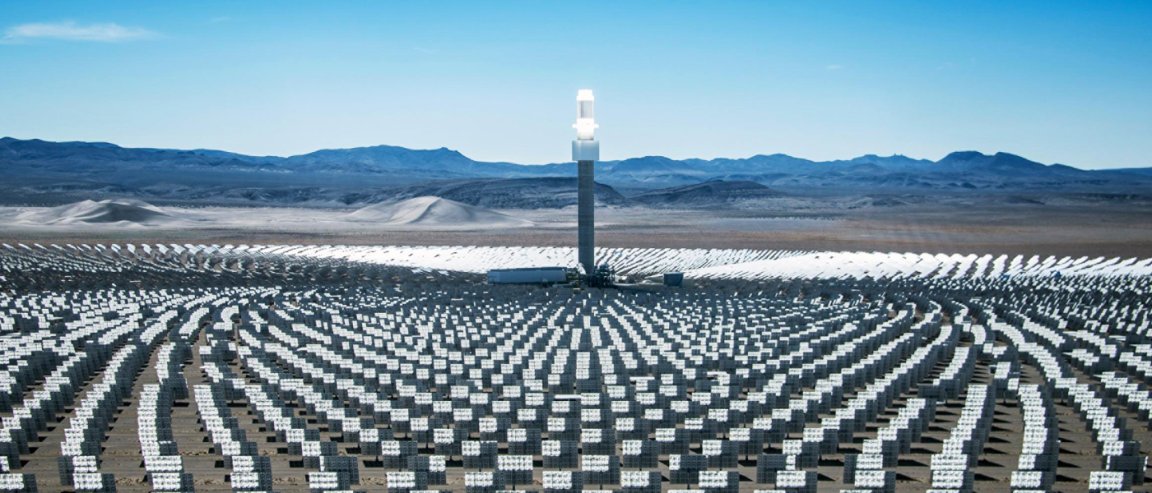
Solar Power…at Night?
Every hour the sun beams onto Earth more than enough energy to satisfy global energy needs for an entire year. Since its discovery, harnessing solar energy efficiently has been the subject of researches for many years. But one thing about solar energy collection is that it’s only available during the day—until now.
Found in the middle of the dust and rocks of the Nevada desert, not to mention the blazing Sun above, Crescent Dunes‘ solar oasis can be found.
Composed of a tall central tower surrounded by a total of 10,437 glass panels, with more than one million square meters (~10.8 million square feet) of glass, this solar oasis is capable of storing energy, enough to supply electricity to 75000 households during peak demand periods, 24/7.

Unlike regular solar panels installed on rooftops and in solar farms worldwide which makes use of photovoltaic (PV) panel technology, Crescent Dunes’ technology can still operate at night.
“The difficulty with photovoltaic is that it’s intermittent,” says Kevin Smith, one of the project’s founders.“When the sun goes down, you’re done.”
This technology works as the multifaceted glass panels track the course of the sun like heliotropic plants.
This field of mirrors then concentrates the sun’s energy, and reflects it directly towards the top of the central tower; which as Smith claims, demonstrates “the world’s most advanced energy-storage technology”, known as molten-salt storage.
Molten-Salt Storage’s Huge Potential
The central tower then secretes a reservoir of potassium and sodium nitrate—about 25,000 metric tonnes (~28,000 US tons) of it—heated in advance to 288°C (550°F), at which temperature the mixture is a clear, water-like liquid.
This is then circulated in narrow, thin-walled tubes, rising dramatically in temperature when exposed to the fearsome, concentrated sunlight at the top of the tower. “We heat it to 560°C (1040°F),” says Smith, “it flows back down the tower and we capture it in a large tank.”
The molten salt efficiently maintains the heat and when the energy is required, it is converted to electricity through a conventional steam turbine.
Highlighting Crescent Dunes’ zero pollutant-emmissions and more efficient water consumption than coal or nuclear power plants, Smith believes that their tech is not just a substitute for photovoltaic panels. He believes that it could also be a potential competitor to conventional fuels in the future.
“It’s really an alternative to fossil fuel or even nuclear. You couldn’t power a city with just PV and wind, but you could with CSP, because of the storage capacity.”